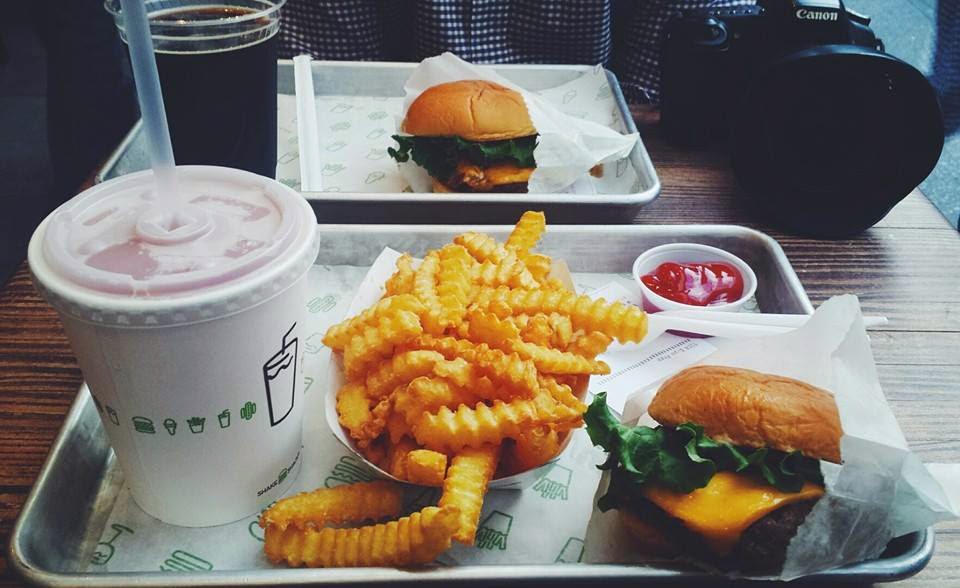So I have a confession to make. I love eating at restaurants
and trying out different types of cuisines. It’s is amazing the variety of food
I can try by eating out. I can try Ethiopian
one day and Japanese another. It’s like
traveling through different cultures in a short period of time in the same city.
I get to learn more about what an injera is and how to eat it; I get to taste
different types of ramen dunk in deliciously rich bone soup. As an individual that values learning about
different cultures, dining out has been a great teacher to me.
Brunch
Mexican
Filipino
Fast food
Living in an urban city with a big University population
made me dine out more often. It’s a social event. If I haven’t seen someone for
a long time, I would meet up with them for lunch or dinner and grab a bite. I also
enjoy trying new restaurants because being adventurous is part of being a
dine-out-holic. Students get influenced by the social norms of our peer group
all the time. It has been shown that
friends are an influential model agents with food selection (Kinard et al.,
2011). So if your friends are eating unhealthy food, you’re most likely going
to be engaging in the same behavior.
Research further shows that the most important factor in unhealthy
eating behaviour among adolescents is self-efficacy (Kinard et al., 2011). It’s not like I can’t cook. I enjoy cooking, but it takes me longer to go through the process of buying groceries and
preparing them. As a student that
studied health sciences, I recognize that the food that I ingest at restaurants are
likely to have disproportionately high percentage of saturated fats, salt and
sugar (Kinard et al., 2011). Research has shown that unhealthy eating is related to chronic health
risks such as cardiovascular diseases and certain types of cancer (Kinard et al., 2011). I know I may not have to worry about chronic
diseases yet because I am still young but I think this is a misconception a lot
the students have. Like saying, “old
habits die hard”, it will be difficult to suddenly implement healthy eating to one’s
lifestyle when one gets older. But let me tell you; for me, it’s been worth it.
I have been making a conscious effort stay away from
restaurants. I opt out of the option of
meeting my friends in a restaurant. I try to meet them at a library to study, meet
at home so we can cook together or meet them briefly for tea. As I mentioned,
we as individuals have a large influence on our friends. If you take the
initiative to take on healthy eating, your friends can be influenced too. Ever
since becoming more mindful about my habits of eating out, I’ve been preparing
my lunch the night before every single day. I make sure to incorporate the different
food groups into my diet. I opt out of difficult dishes unless I have enough time. I prep my vegetables (i.e. buy chopped garlic vs. whole to save time) and choose
something that can be done really quickly such as sautéed vegetables and
grilled chicken breast. Food is
important but I understand that school sometimes comes first. This is where
prioritizing comes in. If you have something important school-related that’s
due tomorrow, make a quick recipe or prepare 2-3 portions per cooking session
and then store it.
I know it is difficult to make a sudden change in your diet
but it is worth the try. Ever since I’ve been cooking and eating-in more, I’ve
felt healthier, saved a lot of money and I feel happy that I am fuelling my body with nutritious food. I've also been learning more about nutrition in general.
Try using the SMART (Specific, Measureable, Achievable,
Realistic, Timely) goal to tackle your dine-out-holism
Example:
I want to reduce the amount of meals I dine out. I will minimize my dine-outs to 1 time a week. I am going to lunch and dinner for the next 2 weeks. I will prepare 2 portions during one cooking session.
Kinard et al. (2011). Factors influencing unhealthy eating behaviour in US adolescents. International Journal of Consumer Studies. 36, 23-29,







No comments:
Post a Comment